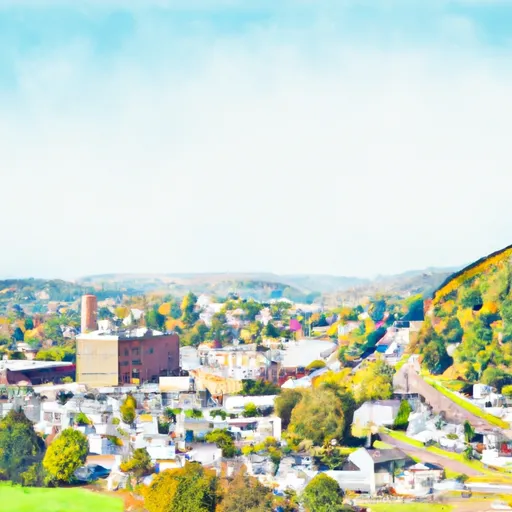-
 Snoflo Premium
Snoflo Premium
Get unlimited access to all our content
With no Ad interruptions! - Start Your Free Trial Login with existing account
Saylorsburg
Eden Index
Climate
8.7
•
Recreation
3.2
•
Community
3.4
•
Safeguard
5.5/10

Saylorsburg, Pennsylvania is a small community located in Monroe County. It experiences a humid continental climate characterized by warm summers and cold winters. Summer temperatures usually range from the mid-70s to mid-80s Fahrenheit, while winter temperatures can drop into the 20s and even lower. The region receives an average annual precipitation of about 45 inches, with snowfall commonly occurring during the winter months.
Hydrologically, Saylorsburg is situated in the Pocono Mountains, which are known for their numerous lakes, streams, and rivers. These water bodies provide opportunities for various outdoor recreational activities. Lake Naomi, located nearby, offers boating, fishing, and swimming. Additionally, the Delaware Water Gap National Recreation Area is a short drive away, providing opportunities for hiking, camping, and exploring scenic waterfalls.
With its picturesque landscape and proximity to the Pocono Mountains, Saylorsburg offers residents and visitors ample opportunities to engage in outdoor recreational activities all year round.
What is the Eden Index?
The Snoflo Eden Index serves as a comprehensive rating system for regions, evaluating their desirability through a holistic assessment of climate health, outdoor recreation opportunities, and natural disaster risk, acknowledging the profound impact of these factors on livability and well-being.
Climate Health Indicator (CHI): 8.7
Saylorsburg receives approximately
1294mm of rain per year,
with humidity levels near 79%
and air temperatures averaging around
10°C.
Saylorsburg has a plant hardyness factor of
6, meaning
plants and agriculture in this region thrive during a short period during spring and early summer. Most
plants will die off during the colder winter months.
By considering the ideal temperature range, reliable water supplies, clean air, and stable seasonal rain or snowpacks, the Climate Health Indicator (CHI) underscores the significance of a healthy climate as the foundation for quality living.
A healthy climate is paramount for ensuring a high quality of life and livability in a region, fostering both physical well-being and environmental harmony. This can be characterized by ideal temperatures, reliable access to water supplies, clean air, and consistent seasonal rain or snowpacks.
Weather Forecast
Streamflow Conditions
Upper Delaware
Area Rivers
Upper Delaware
Snowpack Depths
Upper Delaware
Reservoir Storage Capacity
Upper Delaware
Groundwater Levels
Recreational Opportunity Index (ROI): 3.2
The Recreational Opportunity Index (ROI) recognizes the value of outdoor recreational options, such as parks, hiking trails, camping sites, and fishing spots, while acknowledging that climate plays a pivotal role in ensuring the comfort and consistency of these experiences.
Access to outdoor recreational opportunities, encompassing activities such as parks, hiking, camping, and fishing, is crucial for overall well-being, and the climate plays a pivotal role in enabling and enhancing these experiences, ensuring that individuals can engage in nature-based activities comfortably and consistently.
Camping Areas
| Campground | Campsites | Reservations | Toilets | Showers | Elevation |
|---|---|---|---|---|---|
| Promised Land State Park | None | 1,746 ft | |||
| Ledgedale Rec Area | None | 1,183 ft | |||
| Tobyhanna State Park | None | 1,985 ft | |||
| Wilsonville Rec Area - PPL | None | 1,195 ft | |||
| Ironwood Point Rec Area - PPL | 49 | 1,296 ft | |||
| Lake Towhee County Park | None | 509 ft | |||
| Caffrey Rec Area - PPL | 29 | 1,218 ft |
Nearby Fishing
Nearby Ski Areas
Catastrophe Safeguard Index (CSI):
The Catastrophe Safeguard Index (CSI) recognizes that natural disaster risk, encompassing floods, fires, hurricanes, and tornadoes, can drastically affect safety and the overall appeal of an area.
The level of natural disaster risk in a region significantly affects safety and the overall livability, with climate change amplifying these risks by potentially increasing the frequency and intensity of events like floods, fires, hurricanes, and tornadoes, thereby posing substantial challenges to community resilience and well-being.
Community Resilience Indicator (CRI): 3.4
The Community Resilience Indicator (CRI) recognizes that education, healthcare, and socioeconomics are crucial to the well-being of a region. The CRI acknowledges the profound impact of these elements on residents' overall quality of life. By evaluating educational resources, healthcare accessibility, and economic inclusivity, the index captures the essential aspects that contribute to a thriving community, fostering resident satisfaction, equity, and social cohesion.

